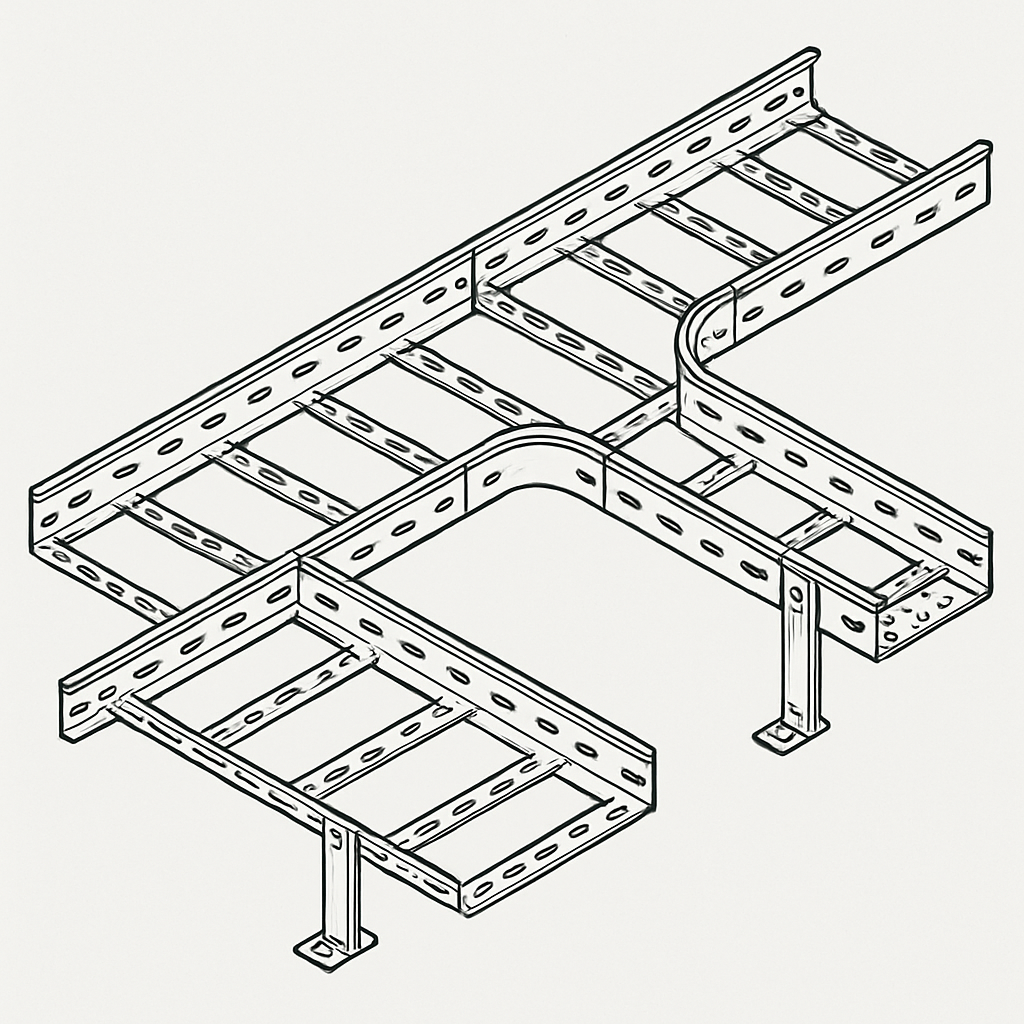In the realm of electrical installations, questions often arise about the best practices and compliance with electrical codes. One such question is whether EMT (Electrical Metallic Tubing) can be supported from a cable tray. This article delves into this topic, answering your questions and providing clarity on related subjects like using cable trays as junction boxes and the accommodation of Romex cables in cable trays.
Before we get into the specifics, let’s clarify what EMT and cable trays are.
EMT, or Electrical Metallic Tubing, is a type of conduit used to protect and route electrical wiring in a building or structure. Known for its thin wall and lightweight properties, EMT is often referred to as “thin-wall” conduit and is commonly used in commercial and industrial applications.
What is a Cable Tray?
A cable tray is a unit or assembly of units or sections with associated fittings that form a rigid structural system used to securely fasten or support cables and raceways. Cable trays are used extensively in commercial and industrial construction for supporting insulated electric cables used for power distribution, control, and communication.
Can EMT Be Supported from a Cable Tray?
The question of whether EMT can be supported from a cable tray often arises during the planning and installation phases of electrical work. The answer to this question depends on a few factors, including compliance with the National Electrical Code (NEC) and the specific requirements of the installation.
NEC Guidelines
The National Electrical Code (NEC) provides regulations and guidelines for electrical installations to ensure safety and reliability. According to NEC Article 300.11, raceways (including EMT) must be supported by the building structure and not by other raceways or cables, unless otherwise noted.
However, the code does allow for some flexibility. If the installation is designed and installed with proper support brackets or hangers that are attached to the building structure, EMT can be supported near or in conjunction with cable trays.
Considerations for Supporting EMT from Cable Tray
When considering supporting EMT from a cable tray, keep the following points in mind:
- Weight and Load: Ensure that the cable tray is rated to support the additional weight of the EMT and any cables within it.
- Proper Fittings: Use appropriate brackets and fittings designed for attaching EMT to the cable tray.
- Code Compliance: Always verify compliance with local building codes and the NEC.
Can a Cable Tray Be Used as a Junction Box?
Another common query is whether a cable tray can function as a junction box.
Cable Trays vs. Junction Boxes
A junction box is an enclosure used to protect the electrical connections of wires. It provides a safe environment for splicing wires together and can prevent accidental damage.
Cable trays, on the other hand, are designed to support and route cables rather than house splices or connections. The NEC does not typically allow cable trays to serve as junction boxes. If splicing is necessary, it should be done within an approved junction box installed in conjunction with the cable tray system.
How Many Romex Cables Can Be Placed in a Cable Tray?
Understanding Romex
Romex is a brand name for a type of non-metallic sheathed cable commonly used in residential wiring. It consists of two or more insulated conductors and a bare ground wire, all encased in a plastic sheath.
NEC Guidelines for Romex in Cable Trays
The NEC allows for Romex cables to be placed in cable trays under specific conditions outlined in Article 392.10. However, the number of Romex cables that can be placed in a cable tray is subject to several factors, including:
- Cable Tray Fill: Cable trays must not exceed their fill capacity, which is determined by the size of the tray and the diameter of the cables.
- Derating: When multiple cables are placed together, heat dissipation can become a concern, requiring derating of the cables’ ampacity.
- Installation Type: The NEC specifies different rules for solid bottom trays, ventilated trays, and ladder type trays.
Always consult the latest NEC edition and local amendments for specific regulations.
Best Practices for Cable Tray Installations
To ensure safe and efficient installations, consider the following best practices:
Proper Planning
Plan the layout of your cable trays and conduits carefully. Take into account the weight, length, and number of cables or conduits that will be supported.
Use of Quality Materials
Ensure that all materials, including trays, brackets, and conduits, are of high quality and meet the required standards.
Regular Inspections
Conduct regular inspections of your cable trays and conduits to ensure they are free from damage and properly secured.
Conclusion
In conclusion, while EMT can be supported from a cable tray under certain conditions, it is crucial to adhere to NEC guidelines and local codes. Cable trays should not be used as junction boxes, and the placement of Romex cables in cable trays should follow specific NEC requirements. By following these guidelines and best practices, you can ensure a safe and compliant electrical installation.
Remember to always consult a licensed electrician or electrical engineer for advice tailored to your specific situation.


